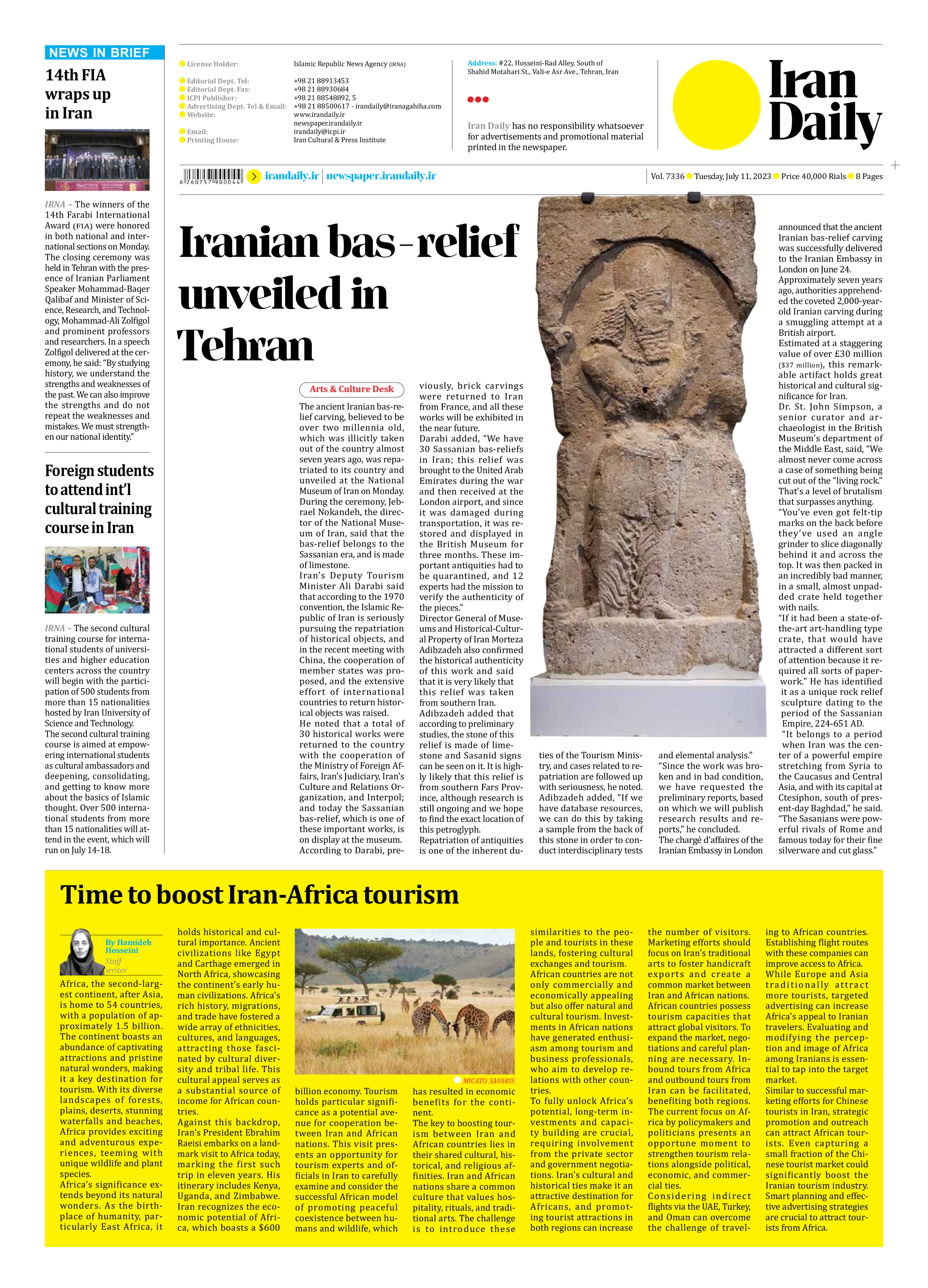
Iranian bas-relief unveiled in Tehran
The ancient Iranian bas-relief carving, believed to be over two millennia old, which was illicitly taken out of the country almost seven years ago, was repatriated to its country and unveiled at the National Museum of Iran on Monday.
During the ceremony, Jebrael Nokandeh, the director of the National Museum of Iran, said that the bas-relief belongs to the Sassanian era, and is made of limestone.
Iran’s Deputy Tourism Minister Ali Darabi said that according to the 1970 convention, the Islamic Republic of Iran is seriously pursuing the repatriation of historical objects, and in the recent meeting with China, the cooperation of member states was proposed, and the extensive effort of international countries to return historical objects was raised.
He noted that a total of 30 historical works were returned to the country with the cooperation of the Ministry of Foreign Affairs, Iran’s Judiciary, Iran’s Culture and Relations Organization, and Interpol; and today the Sassanian bas-relief, which is one of these important works, is on display at the museum.
According to Darabi, previously, brick carvings were returned to Iran from France, and all these works will be exhibited in the near future.
Darabi added, “We have 30 Sassanian bas-reliefs in Iran; this relief was brought to the United Arab Emirates during the war and then received at the London airport, and since it was damaged during transportation, it was restored and displayed in the British Museum for three months. These important antiquities had to be quarantined, and 12 experts had the mission to verify the authenticity of the pieces.”
Director General of Museums and Historical-Cultural Property of Iran Morteza Adibzadeh also confirmed the historical authenticity of this work and said that it is very likely that this relief was taken from southern Iran.
Adibzadeh added that according to preliminary studies, the stone of this relief is made of limestone and Sasanid signs can be seen on it. It is highly likely that this relief is from southern Fars Province, although research is still ongoing and we hope to find the exact location of this petroglyph.
Repatriation of antiquities is one of the inherent duties of the Tourism Ministry, and cases related to repatriation are followed up with seriousness, he noted.
Adibzadeh added, “If we have database resources, we can do this by taking a sample from the back of this stone in order to conduct interdisciplinary tests and elemental analysis.”
“Since the work was broken and in bad condition, we have requested the preliminary reports, based on which we will publish research results and reports,” he concluded.
The chargé d’affaires of the Iranian Embassy in London announced that the ancient Iranian bas-relief carving was successfully delivered to the Iranian Embassy in London on June 24.
Approximately seven years ago, authorities apprehended the coveted 2,000-year-old Iranian carving during a smuggling attempt at a British airport.
Estimated at a staggering value of over £30 million ($37 million), this remarkable artifact holds great historical and cultural significance for Iran.
Dr. St. John Simpson, a senior curator and archaeologist in the British Museum’s department of the Middle East, said, “We almost never come across a case of something being cut out of the “living rock.” That’s a level of brutalism that surpasses anything.
“You’ve even got felt-tip marks on the back before they’ve used an angle grinder to slice diagonally behind it and across the top. It was then packed in an incredibly bad manner, in a small, almost unpadded crate held together with nails.
“If it had been a state-of-the-art art-handling type crate, that would have attracted a different sort of attention because it required all sorts of paperwork.” He has identified it as a unique rock relief sculpture dating to the period of the Sassanian Empire, 224-651 AD.
“It belongs to a period when Iran was the center of a powerful empire stretching from Syria to the Caucasus and Central Asia, and with its capital at Ctesiphon, south of present-day Baghdad,” he said. “The Sasanians were powerful rivals of Rome and famous today for their fine silverware and cut glass.”







